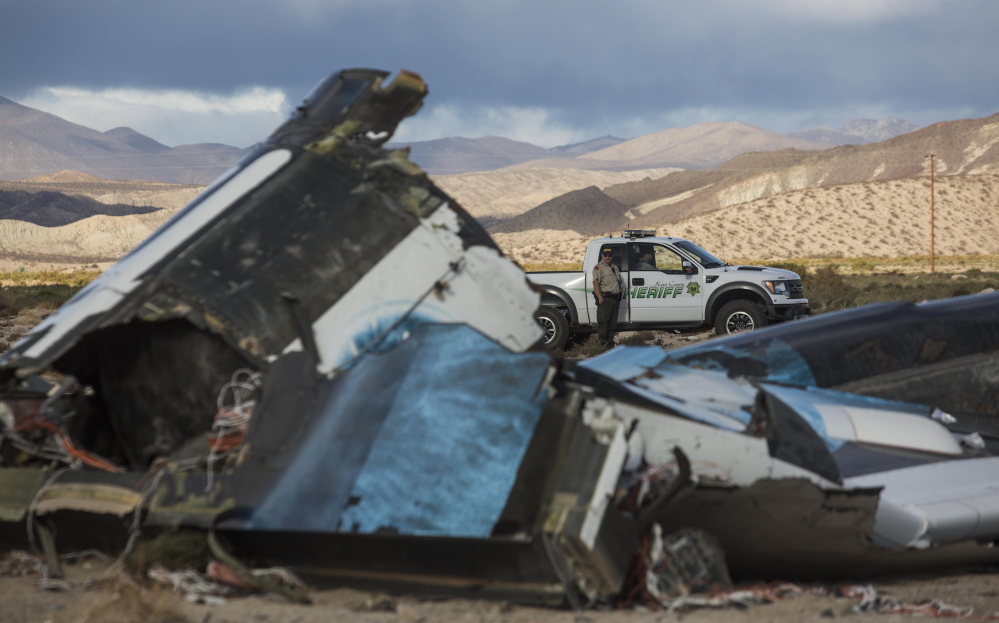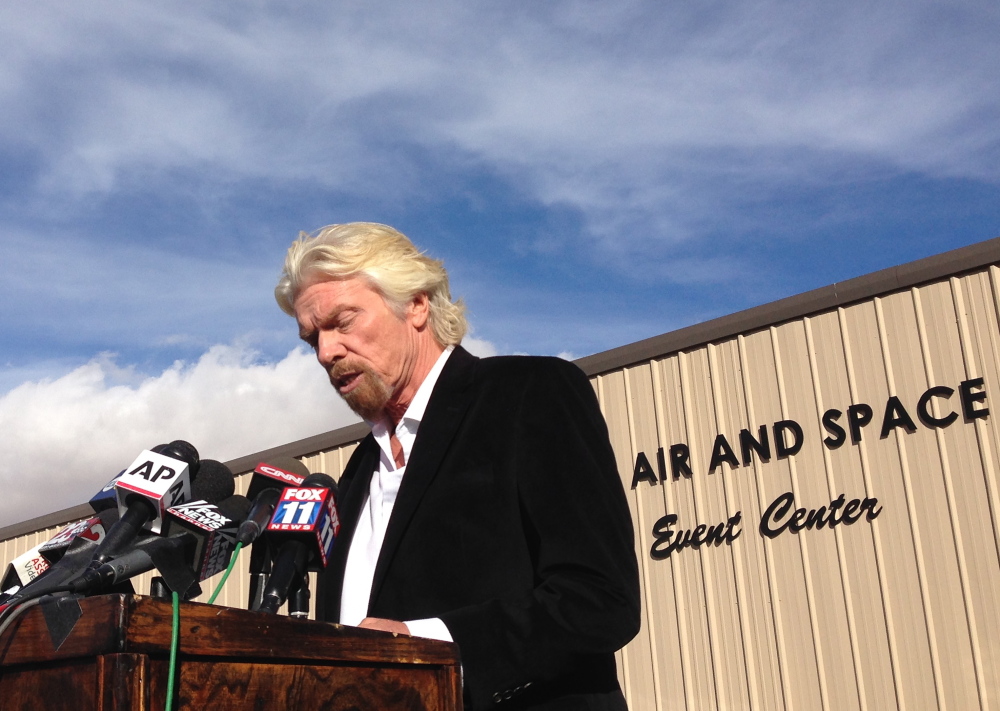CHICAGO — Private spaceflight, an industry built on the dream of taking adventurers and scientists aloft, suffered a setback after two accidents in four days highlighted the perils of rocket power.
As investigators began studying a fatal test flight by Richard Branson’s Virgin Galactic Ltd., manufacturers and regulators are assessing possible fallout on his plans for suborbital tourism and the U.S. government’s decision to deploy commercial space taxis to fly into orbit later this decade.
“This really focuses the mind on what it means when there are people on board these launch vehicles,” said Loren Thompson, an aerospace industry analyst and consultant to Lockheed Martin Corp. “It almost inevitably means that government program managers will be more careful and more conservative, which signals a slow approach to utilizing this technology.”
The close-knit space business was already reeling from the failure of an unmanned Orbital Sciences Corp. rocket on Oct. 28. Then Branson’s SpaceShipTwo was lost on Oct. 31 over California’s Mojave Desert, with one pilot killed and another injured.
“While not a NASA mission, the pain of this tragedy will be felt by all the men and women who have devoted their lives to exploration,” Charles Bolden, administrator of the National Aeronautics and Space Administration, said in a statement.
“Spaceflight is incredibly difficult, and we commend the passion of all in the space community who take on risk to push the boundaries of human achievement.”
CELEBRITY CLIENTS
Little more than a month ago, Bolden and NASA struck a note of triumph in awarding as much as $6.8 billion in contracts to Boeing Co. and Elon Musk’s Space Exploration Technologies Corp. to ferry astronauts to the International Space Station.
Now the emerging business of private spaceflight faces another investigation into what went wrong. The U.S. National Transportation Safety Board is leading the inquiry with support from the Federal Aviation Administration, which licenses commercial space operations.
Virgin Galactic had targeted a 2015 debut for commercial tourism flights with SpaceShipTwo, an enterprise that had attracted celebrity clients from physicist Stephen Hawking to singer Sarah Brightman.
Branson said last month that almost 800 would-be space tourists had signed up for the $250,000 trips. A subdued Branson spoke Saturday at the NTSB press conference in California’s Mojave Desert.
“We are going to learn from what went wrong, discover how we can improve safety and performance, and then move forward together,” he said.
The accident could mean a three- to five-year setback to Virgin Galactic’s schedule for transporting passengers above the Earth’s atmosphere, said Michael Blades, an aerospace and defense analyst with Frost & Sullivan, a New York-based market research firm. The company will have to learn what went wrong, then show regulators via testing that won’t be repeated.
Branson said that he had received e-mails from would-be passengers urging him to forge ahead. He offered refunds and said he expects to lose “one or two” customers.
MOVING TOO QUICKLY?
Branson’s involvement highlighted one of the shifts in the dawning of the second U.S. space age. Instead of being driven by NASA and shadowed by Cold War competition with the Soviet Union, spaceflight generates a buzz because of the involvement of billionaires such as Branson, Musk, Paul Allen and Jeff Bezos.
“The tendency is do a couple of test flights, then get into operation,” said Marco Caceres, director of space studies at Fairfax, Va.-based consultant Teal Group.
“That’s the biggest danger of this new era, where you have shareholder-backed companies making decisions. The danger is moving too quickly into operations before you’ve flown it nearly enough.”
Send questions/comments to the editors.




Success. Please wait for the page to reload. If the page does not reload within 5 seconds, please refresh the page.
Enter your email and password to access comments.
Hi, to comment on stories you must . This profile is in addition to your subscription and website login.
Already have a commenting profile? .
Invalid username/password.
Please check your email to confirm and complete your registration.
Only subscribers are eligible to post comments. Please subscribe or login first for digital access. Here’s why.
Use the form below to reset your password. When you've submitted your account email, we will send an email with a reset code.